Half baronial castle, half rugged cliff-face, the Glasgow School of Art has risen proudly above the city's orderly grid since the turn of the last century, jutting from its steep hillside site like a rocky Highland outcrop. It was chiselled into shape by the city's celebrated son Charles Rennie Mackintosh, who drew up the designs when he was only 28, as a junior draughtsman in a big city firm – yet it shows a level of sophistication that would make it his ultimate masterpiece. A startlingly original concoction, it sampled everything from Celtic ironwork to Japanese joinery, industrial glazing to art nouveau motifs, and provides its students with a dazzling lesson in composition and the craft of making.
The new building sits opposite the art school (which will remain in the Mackintosh building) and the architecture school (located around the corner from these two, and to the west). The new structure is unfussy and monochrome, featuring an external skin of semi-transparent acid etched glass panels with a green tint - which is in fact the glass' natural colour. The building's only other splash of colour is GSA alumni Martin Boyce's stunning coloured glass art piece, which adorns the main entrance. A £50m project that replaces a 1970s concrete tower block and brings the departments of design together under one roof, along with a new lecture theatre, workshops, canteen and staff offices, all wrapped in a minty green shell.
The parallels and inverted contrasts between the two buildings are found not only in their respective programs and geographically mirrored situations but also in preoccupations with light, construction technique and spatial disposition which inform the day to day experience of both buildings.
The design and building process was quick and efficient. 'The concepts we started with are still there,' says project architect Chris McVoy. The new addition's massing was designed to complement and echo Mackintosh's masterpiece, however, in its structure, the building's concept was reversed. As McVoy explains, the Mackintosh building has a 'thick skin and a thin frame', made from stone and metal respectively. In contrast, the Reid building features a thin skin with little adornment and a thick, robust concrete frame. Its white, sculptural interiors are simple and almost raw, providing an appropriately blank canvas for the students' creative work.
Compared to mega-projects in China, a 12,000 square-metre extension to a Scottish art college is small fry. Holl explains the logic of his approach, flicking through scans of his watercolours – the trademark sketches with which he begins each project, painting every morning from 6am "as a form of meditation".
"The building we are in has thin bones and a thick skin," he says, describing how Mackintosh's design is based on slender structures of timber and ironwork inserted into a massive masonry shell, like pieces of cabinetry slotted inside a boulder. "So we've done the opposite." The skin of the Reid building is a continuous surface of milky green glass that wraps its way around the facade, cutting in and out as it climbs to 30 metres, forming angular shelves and folds like fissures in a cliff of ice. It has been sand-blasted to a matt sheen, says Holl, "to make it seem more like alabaster than glass, to pick up the light and reflect Glasgow's changing skies."
It is, however, a very technological building, its arcs and sweeping curves created with state-of-the-art digital and concrete technology and painstaking precision. 'We push the technology of our day, as Mackintosh pushed the craft of his day,' explains McVoy. Three 'driven voids of light' cut through the structure acting as large light shafts and helping with natural air circulation. Their base also provides unexpected breakout spaces for relaxation and socialising. Additionally, as McVoy explains, throughout the building 'the circulation space is also a place for social interaction'.
However, Holl talks with other words, he paints a poetic picture and says, "We like to think of our building here in Glasgow as a silent partner to the Mackintosh," and, "The main symphony is already being played on one side of the street, so ours is a silent accompaniment, the caesura to Mack's concerto."
The layout is easy to read, designed across seven levels and housing workshop areas, offices, galleries and an auditorium. Big, north facing windows light the studio spaces and a café on the third level spills out to a green terrace overlooking the Mackintosh building. 'The studios are the building blocks of our design - the forms are determined by how the light comes in,' explains McVoy, 'and the Mackintosh building was our starting point'.
The school is gearing up towards its new building's official inauguration this April. As well as seeing the new structure - created with the help of local firm JM Architects and Arup Engineering - visitors will now be able to see the original building from different angles too. 'We made an effort to create new views of the Mackintosh building,' says McVoy, paying fitting homage to the great Scottish master's work.
DRAWING ON HOLL EXHIBITION ON VIEW AT THE MACKINTOSH MUSEUM IN THE GLASGOW SCHOOL OF ART FROM FEBRUARY 8 THROUGH MARCH 23, 2014.
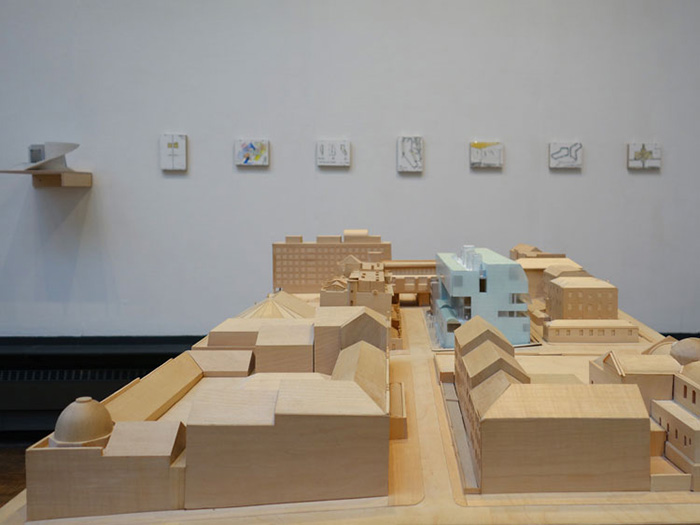
Curated by Mark Baines and Professor Christopher Platt of the Mackintosh School of Architecture at The Glasgow School of Art, Drawing on Holl illuminates the design process through which Steven Holl Architects' new Reid Building came into being. Staged in the Mackintosh Building, the exhibition explores the architectural dialogue between these two significant buildings.
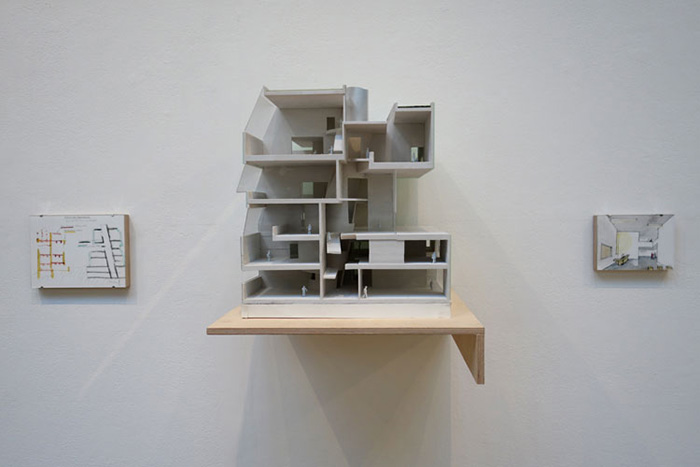
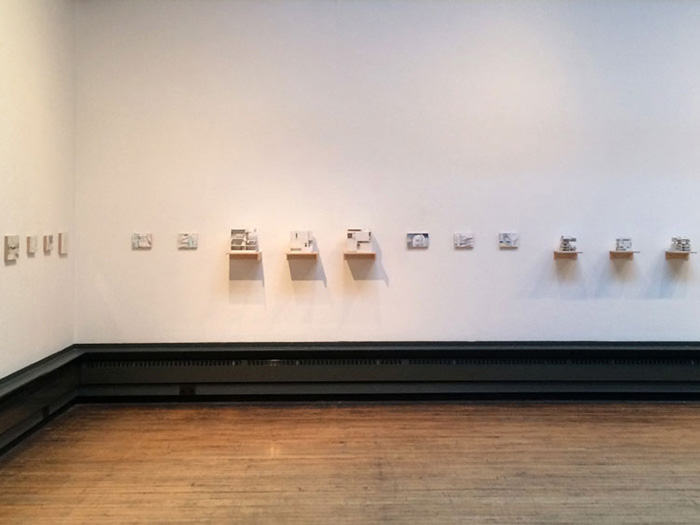
Distanced in time and space by a little over one hundred years and the width of a street, the creative architectural practices of Steven Holl Architects and Charles Rennie Mackintosh engage on the slope of Garnethill. Designed and won in competition by Steven Holl and partner Chris McVoy, in association with JM Architects (Glasgow) the new Reid Building accommodates a relocated Directorate, Design School studios, specialist workshops, auditorium, refectory, exhibition spaces, a new visitor center and the Student Union.
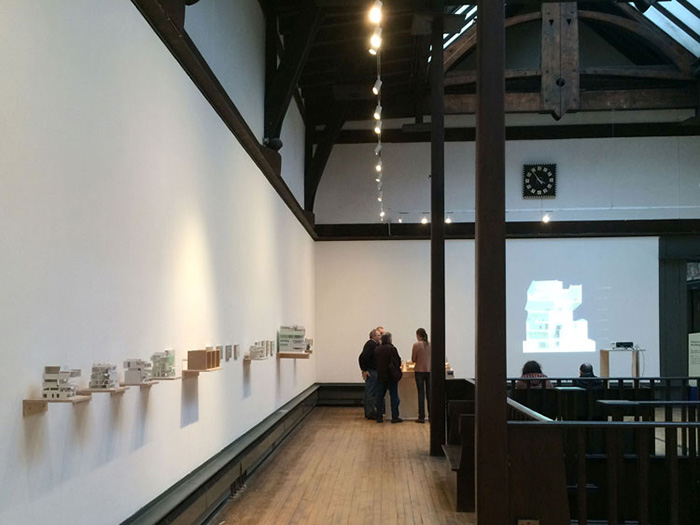
The exhibition chronologically charts the design development of the Reid Building and depicts the driven voids of light, the circuit of connection, the circulation which encourages the notion of "creative abrasion" and the reversed construction method of thick skin/thin bones as in Mackintosh against thin skin/thick bone of the Reid Building.
At the heart of the exhibition are prints of the watercolors created by Steven Holl as the design of the Reid Building evolved. These watercolor sketches investigate and visualize the compositional form, appearance and spatial qualities of the interiors and the facades, in particular the sourcing and the controlled interplay of natural light. These concept sketches initiate model studies, which then inform new sketches, in an iterative cycle of critiques and discoveries within the studio.
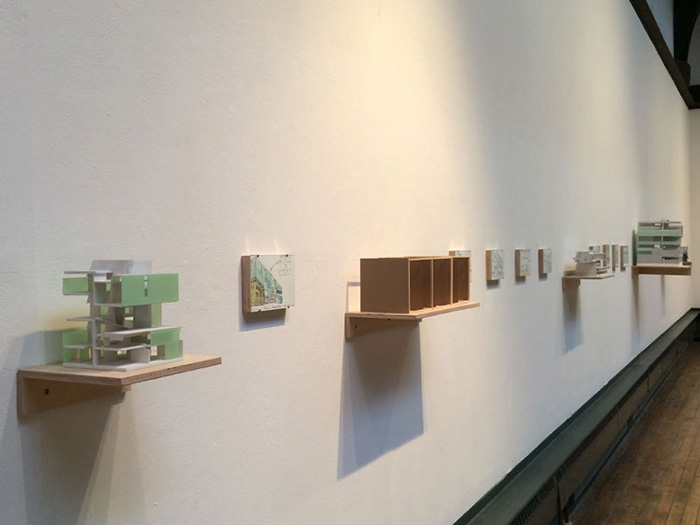
CREDITS
Architect.- Steven Holl Architects. Steven Holl, Chris McVoy (design architects). Chris McVoy, Noah Yaffe (partners in charge). Dominik Sigg (project architect). Dimitra Tsachrelia (assistant project architect). Rychiee Espinosa, Scott Fredricks, JongSeo Lee, Jackie Luk, Fiorenza Matteoni, Ebbie Wisecarver (project team). Dominik Sigg, Peter Adams, Rychiee Espinosa (competition team).
Associate Architects.- JM Architects. Project manager.- Turner & Townsend. Engineer.- Ove Arup & Partners. BREEAM Assessor.- Ove Arup & Partners. Quantity surveyor.- Turner & Townsend. Landscape architect.- Michael Van Valkenburgh and Associates. Planning.- Turley Associates.
Program.- art, design, and architecture school including studios, project spaces, lecture theater, seminar rooms, café, exhibition, and academic administrative spaces.
Client.- Glasgow School of Art.
Size.- 11250 sqm.
General contractor.- Sir Robert McAlpine.
CDM Coordinator.- Cyril Sweett.
GLASGOW SCHOOL OF ART:
AN OPEN LETTER TO THE GOVERNORS, THE DIRECTOR, THE FACULTY, STUDENTS, STAFF, ALUMNAE AND ALUMNI
28/02/2011
A year and three score days ago we assembled in the Glasgow School of Art to celebrate the Centennial of Mackintosh’s much-loved masterpiece. People of many nationalities came together to salute a remarkable work that belongs to its city but also to the world. I was honoured to deliver the keynote address, ‘Materials of the Imagination’, which explored the rich form and meaning of the building, and its diverse sources from Scottish castles, to steamships, to Michelangelo. I suggested that a work of a high order is like a constructed myth. While responding to its time, it inspires future generations. Without pretension or show, Mackintosh’s building goes about its daily business but touches all who enter there.
What a disappointment then to contemplate Steven Holl’s proposed addition. It is horrendously out of scale, it dominates Mackintosh, it does not create a decent urban space, it fails to deal with the context near and far, it is clumsy in form and proportion, it lacks finesse in detail, has no relationship to the human figure, and is a still-born diagramme dressed up in Holl clichés such as ‘iceberg’ glass. The light tubes inside would be dim holes, the cliff of green glazing would rise too high and present a blank to the street. Matt glass it may be, but this would still be a bright and brittle object in the day, and a cold neon light at night effacing the Japanese lantern of the old building opposite. Mr Holl tries to tell us that the glass will be like ‘alabaster’, that it will reflect the Scottish sky but somehow not reflect light onto the Mackintosh’s north facade opposite. A miracle glass then, or else a new kind of light. Soon star architects will walk on water.
The Holl project is lacking in urbanity and would not be out of place in a business park in China or the USA, but it is completely alien to Glasgow with its grid, urban grain, and sobre facades in stone and glass. Above all it fails to harmonise with Mackintosh’s marvellous building opposite. To respond to a historical context does not mean copying the existing, but it does mean interacting at several levels from overall volumes, to proportions, to materials. During the Centennial festivities the risky claim was made on the basis of interview sketches that Holl’s project would be a ‘world-class building’. Now it risks becoming a world-class disaster and I am certainly not alone in thinking so. The two articles that I have published, ‘Facing Up To Mackintosh’ (AJ 04.11.10) and ‘Glasgow Neighbors - Mackintosh versus Steven Holl’ (Architectural Record, February, 2011) have caused avalanches of comments, over 90 per cent of them critical of Holl’s project.
Those responsible for the future of the Glasgow School of Art should remember that they are the temporary residents and custodians of a world masterpiece that must be handed on to future generations. The problems of the new project stem from the very anatomy of its design. It opposes itself to Mackintosh so it obviously should not be built.
Yours sincerely,
William JR Curtis
Historian, critic. Author of Modern Architecture Since 1900.
Slade Professor of Fine Art, Cambridge University, 2003-4.






















































